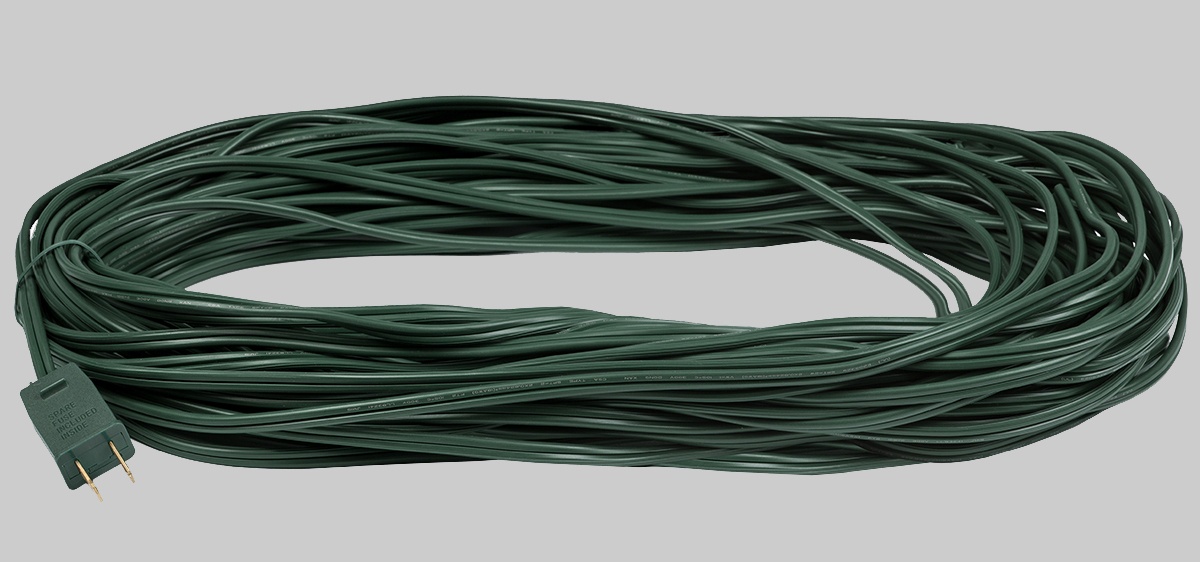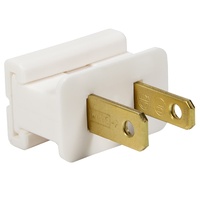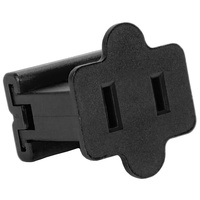Zip plugs are designed to be easy enough for anyone to use. First, let's talk about the names for these plugs. Some people call them zip plugs. Some call them vampire plugs (because of the "vampire teeth" inside them that bite into the wire to connect to electrical current). Some call them Gilbert plugs. They're all the same thing. They come in three types (male, female and inline), two insulation ratings (SPT1 or SPT2) and four colors.
Know Your Plug Types First
You're undoubtedly already familiar with male and female electrical plugs. We use them every day: male plugs have prongs, female plugs have receptacles. You plug males into females. It's exactly the same with zip plugs (except with zip plugs you get to open them up and look inside!). Inline zip plugs are simply a special kind of female plug designed to let electrical wire pass through them so they can be placed anywhere on a wire, not just at one end like male and female plugs.
All of these zip plugs feature "polarization." This, too, is a concept you're familiar with (though you may not realize it). It's the reason most modern household electrical accessories have one wide blade or receptacle, and one narrow. This ensures they can plug together only one way, maintaining the polarization of the electrical current and reducing the risk of electric shock. When you're attaching zip plugs to wire, you must maintain this polarization -- easy to do, but very important.
Zip plugs are designed for SPT1 or SPT2 zip cord wire. When you're ready to begin your project, simply make sure you're using the same insulation type for all your plugs and wire. Our zip plugs come in green, brown, white and black.




















